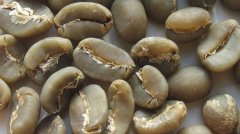Introduction of sweet citrus and floral flavor varieties in Tanzania coffee manor
In 1886, Tanganyika Inland was placed under the German sphere of influence. In November 1917, British forces occupied the whole territory of Tanganyika. In 1920, Tanganyika became a British "mandated territory". In 1946, the United Nations General Assembly adopted a resolution to change it into a British "trust land." on May 1, 1961, Tanzania achieved internal autonomy, declared independence on December 9 of the same year, and established the Republic of Tanganyika a year later.
Zanzibar became a British "protectorate" in 1890, gained autonomy on June 24, 1963, declared independence on December 10 of the same year, and became a constitutional monarchy ruled by the Sultan.
On January 12, 1964, the Sang people overthrew the sultan and founded the Zanzibar people's Republic. Tanganyika and Zanzibar formed a United Republic on April 26, 1964, and changed its name to the United Republic of Tanzania on October 29 of the same year. Julius Kambarage Nyerere was the founding president and was re-elected twice until he resigned voluntarily in 1985. Mwinyi was elected the fourth President of the United Republic on October 27th of the same year and was re-elected in 1990
Tanzania is rich in mineral resources. By 2014, the major minerals identified include gold, diamond, iron, nickel, phosphate, coal and various gemstones, ranking fifth in Africa in total. Tanzania also has huge natural gas reserves. According to official data released by Tanzania, Tanzania has proven natural gas reserves of 44 trillion cubic feet, and the total reserves are expected to reach at least 200 trillion cubic feet. Due to geographical location and economic, political and other reasons, people outside Tanzania believe that Dar es Salaam is the capital of Tanzania. In fact, Dar es Salaam is not the capital of Tanzania. It was the capital of German East Africa from 1891 to 1916. It was the capital of Tanganyika from 1961 to 1964 and later the capital of Tanzania. In 1974, the Tanzanian Parliament decided to move the capital to the inland town of Dorma. The Tanzanian national emblem was formulated in 1964 on the basis of the Tanganyika national emblem, the shield of the central government.
National emblem of Tanzania
National emblem of Tanzania
The face is divided into four parts: the burning torch at the top cuts through the pre-dawn darkness and lights the flame of freedom and hope; it is painted with the Tanzanian flag; and below on the red ground are crossed tomahawks and spears; finally, the waters of the Indian Ocean and the lakes in the country. Below the shield emblem is Africa's first peak, the snow-capped Mount Kilimanjaro; the melting ice peak nourishes the earth, and coffee and cotton grow on both sides of the peak, representing the country's booming agricultural production. A pair of local men and women guard both sides of the shield emblem, holding ivory. On the white ribbon across the hillside, Tanzanians express their desire for "freedom and unity" in Swahili.
The coffee beans produced here are all exported from Kilimanjaro, but apart from Mount Kilimanjaro, there are several major coffee-producing areas throughout Tanzania, there are more small farms in other areas, and most small farms also have a planting area of several hundred mu. Some have their own washing equipment and drying farms, but graded treatment still has to go through large-scale treatment plants. Tanzania has considerable historical experience in growing coffee, and even small farms can handle good quality coffee beans.
Drinking Tanzanian coffee, especially the small round bean peaberry, is always impressive. Coffee is like the simple, frank and enthusiastic national character of Tanzania. Its refreshing acidity and medium mellowness complement sweet citrus and floral aromas. This coffee tastes great whether it's a hot drink or iced coffee. With oranges or berries, it can show its bright flavor. You can see that different ethnic groups produce different coffee flavors, while the same land is pregnant with coffee trees and human processing plants are located in towns near the foot of the mountain, making it easy to handle coffee beans nearby. Many of the farm owners' families have lived here for generations of immigrants, including Indians, Scandinavians, British, and, of course, locals, but most of them are small farms. however, the managers of farms and processing farms are mostly local people. Labor in Tanzania is cheap, so much of the work of pruning and maintaining coffee plantations in Tanzania depends on manual processing rather than machines. During the coffee growing season, the job of coffee workers is to manually check to remove the leaves of some sick or growing insects. Coffee processing in Tanzania is highly dependent on labor, but it also brings jobs to locals and increases household income. Workers earn their wages by picking the number of coffee fruits, and women on small farms use their hand-made sacks to bring coffee fruits to the farm to calculate the money.

Important Notice :
前街咖啡 FrontStreet Coffee has moved to new addredd:
FrontStreet Coffee Address: 315,Donghua East Road,GuangZhou
Tel:020 38364473
- Prev

Taste characteristics of slightly sour Vietnamese coffee varieties introduction to the flavor of fine coffee beans in the manor
Vietnamese coffee has a strong flavor, light sour taste, smooth and moist taste, slightly bitter in mellow, full-bodied, refreshing and refreshing. The representative products are moossy Coffee, Central Plains Coffee (G7 coffee), Saigon Coffee (SAGOCAFE) and Highland Coffee. Vietnam's geographical location is very favorable for coffee cultivation. Southern Vietnam has a hot and humid tropical climate, which is suitable for growing ROBUSTA coffee.
- Next

Sweet and mellow Latin American coffee varieties Taste characteristics Manor boutique coffee beans Flavor introduction
Latin America In 1721, Gabriel Mathieu de Clieu, a French naval officer, took the first coffee sapling from Africa to Martinique in Latin America, which is the origin of coffee cultivation in Latin America. Because France was under Bourbon rule at the time, Arabi cultivated in Latin America
Related
- Detailed explanation of Jadeite planting Land in Panamanian Jadeite Manor introduction to the grading system of Jadeite competitive bidding, Red bid, Green bid and Rose Summer
- Story of Coffee planting in Brenka region of Costa Rica Stonehenge Manor anaerobic heavy honey treatment of flavor mouth
- What's on the barrel of Blue Mountain Coffee beans?
- Can American coffee also pull flowers? How to use hot American style to pull out a good-looking pattern?
- Can you make a cold extract with coffee beans? What is the right proportion for cold-extracted coffee formula?
- Indonesian PWN Gold Mandrine Coffee Origin Features Flavor How to Chong? Mandolin coffee is American.
- A brief introduction to the flavor characteristics of Brazilian yellow bourbon coffee beans
- What is the effect of different water quality on the flavor of cold-extracted coffee? What kind of water is best for brewing coffee?
- Why do you think of Rose Summer whenever you mention Panamanian coffee?
- Introduction to the characteristics of authentic blue mountain coffee bean producing areas? What is the CIB Coffee Authority in Jamaica?

